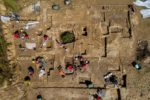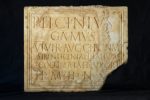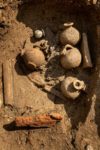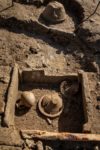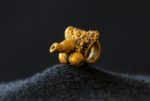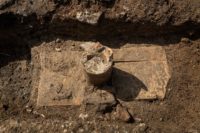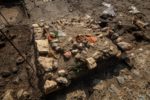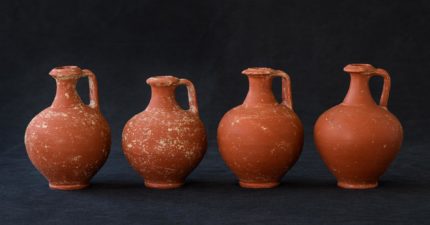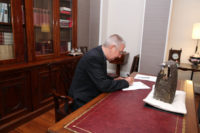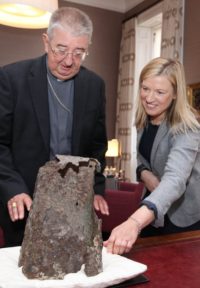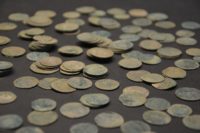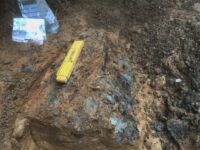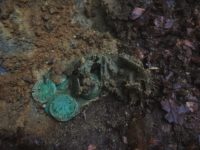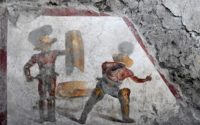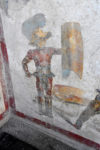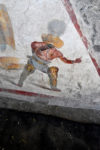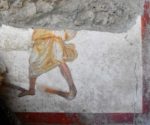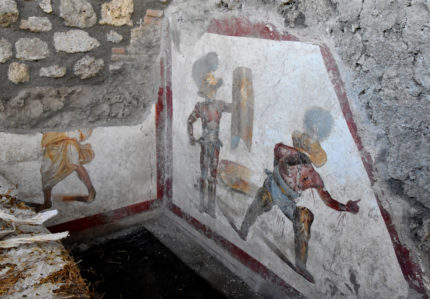 A rare iron arrowhead estimated to be about 1,000 years old has been discovered in the mountains of the Hardanger Plateau in central southern Norway. Local resident Ernst Hagen found it lying casually on the ground when he was out for a walk outside his mountain cabin near the spectacular Vøringsfossen waterfall. (He’s in rarified company; composer Edvard Grieg had a cabin there too.)
A rare iron arrowhead estimated to be about 1,000 years old has been discovered in the mountains of the Hardanger Plateau in central southern Norway. Local resident Ernst Hagen found it lying casually on the ground when he was out for a walk outside his mountain cabin near the spectacular Vøringsfossen waterfall. (He’s in rarified company; composer Edvard Grieg had a cabin there too.)
Realizing the hunting tool had to predate the use of firearms, Hagen took the 12 cm (4.7 inches) iron arrowhead to the county council where archaeologist Tore Slinning confirmed it was a historic piece and no comparable finds had been reported in Hordaland county. Experts have estimated it to date to the early Middle Ages based on its design.
The plateau, the largest eroded plain plateau in Europe, has a cold alpine climate and is home to the Hardangerjøkulen glacier, one of Norway’s largest. There is archaeological evidence of villages in the area going back to the Neolithic era. These are believed to have been nomadic settlements occupied temporarily by hunters following the migrating herds of reindeer. Even today the plateau is home to some of the largest herds of reindeer in the world who cross from their winter feeding grounds east of the plateau to their summer breeding grounds on the west side.
Artifact finds are extremely rare in the area, with small objects destroyed by the glacier movement or covered in ice and snow. Norway’s glaciers have shrunk by 12% over the past 50 years, however, and the glacier retreat is rapidly increasing due to climate change. As with other endangered cold environments, archaeological finds that would otherwise be preserved indefinitely in the ice are being exposed by thaw.
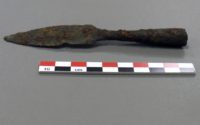 The arrowhead is rusted and could have been so since shortly after the medieval reindeer hunter missed his quarry a thousand years ago. It may also have oxidized very recently when the artifact was exposed to the air after the ice melted. The same goes for the wooden shaft and fletching which have not survived. If the arrow was trapped in soil, they may have decomposed over many centuries. If the whole thing was encased ensconced in ice, on the other hand, we may have lost them very recently.
The arrowhead is rusted and could have been so since shortly after the medieval reindeer hunter missed his quarry a thousand years ago. It may also have oxidized very recently when the artifact was exposed to the air after the ice melted. The same goes for the wooden shaft and fletching which have not survived. If the arrow was trapped in soil, they may have decomposed over many centuries. If the whole thing was encased ensconced in ice, on the other hand, we may have lost them very recently.
The arrowhead is now being conserved at the University Museum in Bergen. It will be stabilized so that it does not continue to corrode and experts will attempt to narrow down its date of manufacture.
